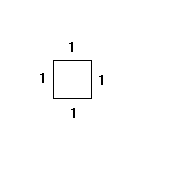Please wait while we process your payment
If you don't see it, please check your spam folder. Sometimes it can end up there.
If you don't see it, please check your spam folder. Sometimes it can end up there.
Please wait while we process your payment

By signing up you agree to our terms and privacy policy.
Don’t have an account? Subscribe now
Create Your Account
Sign up for your FREE 7-day trial
By signing up you agree to our terms and privacy policy.
Already have an account? Log in
Your Email
Choose Your Plan
Individual
Group Discount
Save over 50% with a SparkNotes PLUS Annual Plan!
 payment page
payment page
Purchasing SparkNotes PLUS for a group?
Get Annual Plans at a discount when you buy 2 or more!
Price
$24.99 $18.74 /subscription + tax
Subtotal $37.48 + tax
Save 25% on 2-49 accounts
Save 30% on 50-99 accounts
Want 100 or more? Contact us for a customized plan.
 payment page
payment page
Your Plan
Payment Details
Payment Summary
SparkNotes Plus
You'll be billed after your free trial ends.
7-Day Free Trial
Not Applicable
Renews July 25, 2025 July 18, 2025
Discounts (applied to next billing)
DUE NOW
US $0.00
SNPLUSROCKS20 | 20% Discount
This is not a valid promo code.
Discount Code (one code per order)
SparkNotes PLUS Annual Plan - Group Discount
Qty: 00
SparkNotes Plus subscription is $4.99/month or $24.99/year as selected above. The free trial period is the first 7 days of your subscription. TO CANCEL YOUR SUBSCRIPTION AND AVOID BEING CHARGED, YOU MUST CANCEL BEFORE THE END OF THE FREE TRIAL PERIOD. You may cancel your subscription on your Subscription and Billing page or contact Customer Support at custserv@bn.com. Your subscription will continue automatically once the free trial period is over. Free trial is available to new customers only.
Choose Your Plan
This site is protected by reCAPTCHA and the Google Privacy Policy and Terms of Service apply.
For the next 7 days, you'll have access to awesome PLUS stuff like AP English test prep, No Fear Shakespeare translations and audio, a note-taking tool, personalized dashboard, & much more!
You’ve successfully purchased a group discount. Your group members can use the joining link below to redeem their group membership. You'll also receive an email with the link.
Members will be prompted to log in or create an account to redeem their group membership.
Thanks for creating a SparkNotes account! Continue to start your free trial.
We're sorry, we could not create your account. SparkNotes PLUS is not available in your country. See what countries we’re in.
There was an error creating your account. Please check your payment details and try again.
Please wait while we process your payment

Your PLUS subscription has expired
Please wait while we process your payment
Please wait while we process your payment

Introduction to Area
Area is a property of all two-dimensional figures. It measures the combined length and width of a region. In the following lessons we'll explore the area of regions in a plane, although area is also a property of two-dimensional surfaces that don't lie in a plane. In those cases, covered in Three Dimensional Measurements, it is referred to as surface area.
A region in a plane is defined as any simple closed curve united with its interior. Such a curve can be convex or concave; either way, it has area. The unit of measurement of area is the square unit, which, specifically, is a square whose sides are one unit long. Square units is a generic term; it can be measured according to different measures of length. For example, a piece of paper is measured in square inches, whereas land is measured in square miles. In this text, however, we'll just use the generic term square units. A square unit looks something like this:

A region, bound by any simple closed curve, doesn't always break down into
squares of the same size; in fact, this kind of perfect break down happens very
rarely. There is a way, however, to make a decent approximation of the area of
such a region. When a grid of square units is placed over a region whose sides
aren't straight, area becomes easier to visualize. The grid makes it possible
to count the square units and estimate the fractions of square units in the
region and approximate its area. Here is how the technique is employed:

In geometry, we'll study cases in which a region does break down nicely into squares. We'll also study cases in which a region breaks down into other shapes, like triangles, whose areas can be calculated using formulas. All of our study will hopefully make it possible to make educated approximations of areas in real life.
Please wait while we process your payment

